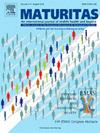绝经期妇女症状治疗辅助决策工具的开发、内容验证和可行性
IF 3.9
2区 医学
Q2 GERIATRICS & GERONTOLOGY
引用次数: 0
摘要
导言:尽管研究支持更年期激素治疗绝经期妇女,其使用在大多数欧洲国家和美国继续下降。专家们强调需要全球评估工具,以协助临床医生评估对有症状的更年期妇女的治疗,因此制定了《更年期治疗工具》,并为妇女和保健专业人员提供了单独的版本。该工具的两个版本都侧重于更年期症状、风险水平和建议的行动;妇女工具在会诊前使用,而临床医生工具在临床会诊期间由临床医生使用。目的:评价绝经治疗工具(适用于女性和临床医生)在临床实践中的内容效度和可行性。方法:本研究通过对临床医生进行问卷调查和访谈,以及对英国、德国、意大利、波兰、西班牙、瑞士和美国的绝经期妇女进行问卷调查,收集咨询后反馈。进行了定性和描述性分析。结果:8名初级保健医生(仅英国,美国)和41名妇科医生(除英国外的所有国家),平均执业时间为13年。绝经期妇女(n = 172)年龄在45 - 61岁之间(平均52岁)。根据来自160名临床医生和156名绝经期妇女的反馈问卷,大多数(约85%)临床医生和妇女报告这两种工具对于讨论症状和治疗方案都是方便和有价值的。大多数临床医生(55%)和妇女(70%)报告说,相互作用和对治疗决策的信心有所改善。一些临床医生倾向于将这些工具电子化,以便更好地与患者记录整合。结论:本研究证实了绝经治疗工具的内容有效性和临床应用的可行性。更年期治疗工具加强了临床医生和妇女之间关于更年期症状和治疗益处/风险的讨论,增强了治疗决策的信心。本文章由计算机程序翻译,如有差异,请以英文原文为准。
Development, content validation and feasibility of a decision aid tool for the treatment of women with menopausal symptoms
Introduction
Despite research supporting menopause hormonal therapy for menopausal women, its use continues to decline in most European countries and the United States. Experts highlighted the need for global assessment tools to assist clinicians in evaluating treatment for symptomatic menopausal women, which led to the development of the Menopause Treatment Tool, with separate versions for women and healthcare professionals. Both versions of the tool focus on menopausal symptoms, risk levels and suggested actions; the women's tool is administered prior to the consultation, while the clinician tool is administered by the clinician during the clinical consultation.
Objective
To assess content validity and feasibility of the Menopause Treatment Tool (for women and for clinicians) in clinical practice.
Methods
This non-interventional study collected post-consultation feedback through questionnaires and interviews with clinicians and questionnaires with menopausal women in the United Kingdom, Germany, Italy, Poland, Spain, Switzerland, and the US. Qualitative and descriptive analyses were conducted.
Results
Eight primary care physicians (UK, US only) and 41 gynaecologists (all countries, except the UK), with an average of 13 years of practice, participated. Menopausal women (n = 172) were aged between 45 and 61 years (mean 52 years).
Based on feedback questionnaires from 160 clinicians and 156 menopausal women, most (>85 %) clinicians and women reported both tools to be convenient and valuable for discussing symptoms and treatment options. Most clinicians (>55 %) and women (>70 %) reported improved interactions and confidence in treatment decisions. Several clinicians preferred making these tools electronically available for better integration with patient records.
Conclusions
This study confirmed the Menopause Treatment Tool's content validity and feasibility for use in clinical practice. The Menopause Treatment Tool enhanced discussions between clinicians and women about menopause symptoms and treatment benefits/risks, boosting confidence in treatment decisions.
求助全文
通过发布文献求助,成功后即可免费获取论文全文。
去求助
来源期刊

Maturitas
医学-妇产科学
CiteScore
9.10
自引率
2.00%
发文量
142
审稿时长
40 days
期刊介绍:
Maturitas is an international multidisciplinary peer reviewed scientific journal of midlife health and beyond publishing original research, reviews, consensus statements and guidelines, and mini-reviews. The journal provides a forum for all aspects of postreproductive health in both genders ranging from basic science to health and social care.
Topic areas include:• Aging• Alternative and Complementary medicines• Arthritis and Bone Health• Cancer• Cardiovascular Health• Cognitive and Physical Functioning• Epidemiology, health and social care• Gynecology/ Reproductive Endocrinology• Nutrition/ Obesity Diabetes/ Metabolic Syndrome• Menopause, Ovarian Aging• Mental Health• Pharmacology• Sexuality• Quality of Life
 求助内容:
求助内容: 应助结果提醒方式:
应助结果提醒方式:


